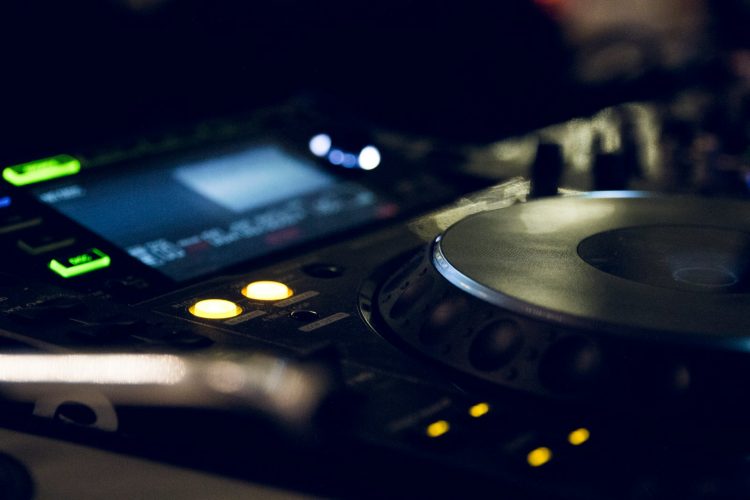In an age dominated by electronic production, auto-tuned vocals, and heavily processed tracks, acoustic live performances offer something profoundly different—an experience that strips away the artifice, allowing raw emotion and talent to take center stage. There’s a magic in witnessing a live performance that is pared down to its most basic, organic elements: the voice, the instruments, and the intimate energy between the performer and the audience. Acoustic performances are more than just concerts; they are moments of authenticity, vulnerability, and deep connection that resonate on a level that amplified music often cannot.
This essay will explore the unique allure of acoustic live performances, highlighting their raw energy, intimate atmosphere, emotional impact, and their ability to create a lasting bond between artist and audience. We will also delve into how acoustic music fosters a connection to the music itself and why it continues to hold a special place in the hearts of listeners worldwide.
A Return to Authenticity: Stripping Away the Layers
One of the most compelling aspects of acoustic performances is their simplicity. Unlike heavily produced tracks, which often rely on layers of electronic beats, synthesizers, and vocal effects, an acoustic performance brings the music back to its roots. A single voice paired with a guitar, piano, or other acoustic instruments often allows for a more honest, unfiltered experience. In this environment, there is nowhere to hide behind flashy effects or studio magic. The artist’s talent, emotion, and musicality are laid bare for the audience to experience in their purest form.
This return to authenticity can create a more profound emotional connection. Audiences are no longer distracted by complex production elements or over-polished sound; instead, they are invited into a world where imperfections—whether it’s a slightly off-pitch note, a missed chord, or a moment of vulnerability in the performance—become part of the charm. The rawness of acoustic performances makes them feel more real, allowing the listener to connect with the artist in a way that feels more personal.
The stripped-back nature of acoustic music allows the subtleties of the performance to shine. Whether it’s the delicate strum of an acoustic guitar, the soft hum of a violin, or the haunting fragility of a solo voice, these performances offer a space where each note and nuance can be fully appreciated. The intricate details that might be lost in a more heavily produced track become the focal point, creating an experience that feels intimate and immediate.
Intimacy and Connection: A Shared Experience
Acoustic live performances thrive in intimate settings, often performed in smaller venues like cafes, theaters, or even living rooms. This proximity between artist and audience creates a palpable sense of closeness that is hard to replicate in larger, more impersonal concert halls. In a small venue, the audience can hear every breath, every strum, and every pause between the lyrics, which fosters a sense of shared experience. There’s no divide between the performer and the crowd; the connection feels personal, as if the artist is singing directly to each individual in the room.
This closeness also encourages a more interactive atmosphere. In contrast to larger performances where fans may feel like passive observers, acoustic concerts often invite participation. Audiences may sing along, clap in rhythm, or respond to the performer’s cues. The performance becomes a conversation between the artist and the crowd, a collaboration that feels spontaneous and electric.
The intimacy of an acoustic live performance also extends beyond the physical setting. When artists perform acoustically, they often share stories or anecdotes that provide insight into the inspiration behind their songs. These moments of personal vulnerability deepen the connection between the performer and the audience. The song no longer exists in isolation; it becomes part of a larger narrative—a shared experience that resonates beyond the music itself.
Emotional Impact: A Raw and Unfiltered Journey
Perhaps the most profound aspect of acoustic live performances is their ability to tap into deep emotional currents. The stripped-down nature of the performance allows the listener to fully immerse themselves in the emotional content of the music, unencumbered by distractions or embellishments. Without the heavy layers of production, the listener is drawn into the raw emotional core of the performance.
For artists, acoustic performances offer an opportunity to convey the most intimate parts of themselves. They can explore vulnerability, joy, sorrow, hope, or heartbreak in a way that feels more genuine and less guarded. Because acoustic music tends to focus on melody, harmony, and lyrics in their purest form, the emotions conveyed by the performer are more direct and unambiguous. There is no need for flashy production techniques to mask or enhance the emotions being expressed. Instead, it is the strength of the artist’s voice and the simplicity of the arrangement that carry the emotional weight.
For the audience, the emotional impact of an acoustic performance is often magnified. In a world where people are increasingly surrounded by artificial noise and distractions, the simplicity and honesty of acoustic music can be incredibly cathartic. It allows listeners to process their own emotions and connect with the artist’s experiences in a profound way. In many cases, these performances provide an opportunity for collective emotional release, as an entire room of strangers shares a moment of vulnerability together.
The Power of Acoustic Music Across Genres
While acoustic performances are often associated with folk, singer-songwriter, and unplugged versions of popular songs, the magic of live acoustic music transcends genre boundaries. Acoustic performances can be found in virtually every style of music, from rock and pop to jazz and classical. Whether it’s a beloved rock band performing a stripped-back version of their hits or a jazz trio improvising in a cozy club, acoustic music has the power to convey the essence of the music in a way that feels fresh and unique.
In the world of rock and pop music, many artists choose to perform acoustic sets as a way to showcase the raw structure of their songs. When stripped of their usual production elements, the strength of the song’s melody and lyrics is often brought to the forefront. Fans are able to hear the song in a new light, rediscovering it in a more personal and intimate context.
For classical music lovers, acoustic performances are the norm. The delicate interplay between strings, woodwinds, and piano creates an emotional depth that is often lost in larger, more elaborate orchestral arrangements. The intimacy of an acoustic chamber performance allows listeners to fully appreciate the nuances of the music, whether it’s the subtle trill of a violin or the lush harmonies of a small ensemble.
Even in more experimental genres, acoustic performances offer a space for artists to experiment with sound and texture in a way that electronic music sometimes cannot. The physicality of playing an acoustic instrument—whether it’s the pluck of a guitar string or the tap of a drumstick on a snare—adds an element of sensory engagement that can make the performance feel more immediate and tangible.
Why Acoustic Live Performances Will Always Matter
As technology continues to advance and electronic production becomes more sophisticated, it is easy to wonder if acoustic live performances will eventually fade into obscurity. However, the truth is that acoustic performances are more important than ever. In a world where digital noise often dominates, the simplicity of an acoustic performance offers a much-needed respite—a return to what is real, genuine, and human.
In an acoustic setting, it’s not about perfection; it’s about presence. It’s about the connection between the performer and the audience, the exchange of energy, and the celebration of music in its most vulnerable form. Whether it’s the quiet strum of a guitar, the haunting notes of a solo piano, or the raw, unpolished voice of a singer, acoustic live performances provide a space where listeners can reconnect with the emotional essence of music.
Acoustic music also offers a timeless quality that continues to resonate with listeners of all ages. Despite the constant evolution of music production and technology, acoustic performances remain a powerful way to experience music in its purest form—an experience that will always have a place in the hearts of those who seek authenticity, emotional depth, and a deeper connection to the music.





